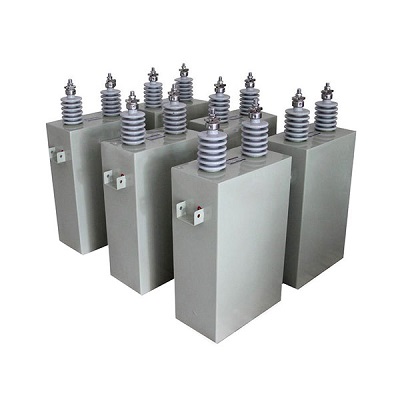Capacitors are divided into several categories
According to analysis and statistics, capacitors are mainly divided into the following 10 categories:
1. According to the structure, it is divided into three categories: fixed capacitors, variable capacitors, and trimmer capacitors.
3. According to the purpose, there are high-frequency bypass, low-frequency bypass, filtering, tuning, high-frequency coupling, low-frequency coupling, and small capacitors.
5. High-frequency bypass: ceramic capacitors, mica capacitors, glass film capacitors, polyester capacitors, and glass glaze capacitors.
6. Low-frequency bypass: paper capacitors, ceramic capacitors, aluminum electrolytic capacitors, polyester capacitors.
2. Classification by electrolyte: organic dielectric capacitors, inorganic dielectric capacitors, electrolytic capacitors, electric heating capacitors, air dielectric capacitors, etc.
4. According to the different manufacturing materials, can be divided into ceramic capacitors, polyester capacitors, electrolytic capacitors, tantalum capacitors, and polypropylene capacitors.
7. Filtering: aluminum electrolytic capacitors, paper capacitors, composite paper capacitors, and liquid tantalum capacitors.
8. Tuning: ceramic capacitors, mica capacitors, glass film capacitors, polystyrene capacitors.
9. Low coupling: paper capacitors, ceramic capacitors, aluminum electrolytic capacitors, polyester capacitors, solid tantalum capacitors.
10. Small capacitors: metalized paper capacitors, ceramic capacitors, aluminum electrolytic capacitors, polystyrene capacitors, solid tantalum capacitors, glass glaze capacitors, metalized polyester capacitors, polypropylene capacitors, mica capacitors.

What does a capacitor do
3. It can transmit AC signals.
4. It can be used together with an inductor to form an oscillator.
1. Capacitors can store charge and have the function of blocking DC.
2. It can store and release electric charge, which is the most basic function.
Capacitors are components that store electricity and electrical energy. Before using capacitors, their quality is extremely important. After all, they are used in circuits. If you find any abnormality, you must take protective measures and replace them. And keep it away from the power supply to prevent aging caused by excessive external temperature. It should be checked frequently during use and diligently replaced. Performance and safety may not be guaranteed after a long time. After you understand the relevant knowledge and precautions about capacitors, you can use capacitors.
Power capacitors do not need any protection against lightning intrusion waves
The main measure to prevent lightning damage to power equipment is a lightning arrester. A lightning arrester is a kind of equipment that is often used in communication cables to prevent lightning damage. It is mainly connected between the cable and the ground and is connected in parallel with the protected equipment. If abnormal voltage occurs, it can function and effectively protect the communication equipment.
When a high voltage occurs, the arrester will lead the high-voltage surge current to the ground, thereby limiting the voltage amplitude and protecting the insulation of the communication cable and equipment. When the voltage disappears, it will quickly return to its original state to ensure the normal operation of the communication line.
A lightning arrester is an electrical appliance used to protect various electrical equipment in the power system from lightning overvoltage, operating overvoltage, and power frequency transient overvoltage, and to limit the freewheeling time and the freewheeling amplitude.
Surge arresters, also known as overvoltage protectors, overvoltage limiters, etc., are usually connected between the grid wire and the ground wire, and sometimes beside the electrical winding or between the wires. They can be divided into valve-type arresters and zinc oxide arresters. and other types.
How Power Capacitors Work
Under the action of the electric field, the capacitor stores charges on the plates, and an electric field is established in the medium between the plates, and the capacitor stores a certain amount of charge and electric field energy. The amount of charge on the capacitor plate is proportional to the voltage applied across the capacitor. That is, the higher the voltage applied between the two plates, the more charges are accumulated on the two plates. The size of the capacitance of the capacitor is determined by the geometric size of the capacitor body (the area of the electrode plate and the thickness of the dielectric between the electrodes) and the dielectric coefficient of the dielectric and has nothing to do with the external conditions (the level of the applied voltage). In practical work, in order to meet the requirements of operating voltage or reactive power capacity, a single capacitor is often connected in series or in parallel to form a capacitor bank for application.
When the capacitance required in work is greater than the capacitance of a single capacitor, multiple capacitors can be used in parallel, and the equivalent total capacitance after the parallel connection is the sum of the capacitance values of each capacitor.
When the voltage of a single capacitor is less than the operating voltage, connect several capacitors in series to meet the voltage requirements. The reciprocal of the total equivalent capacitance in series is equal to the sum of the inverses of the series capacitances.
Editor's summary: The above is the content of the power capacitor introduced by the month to you, I hope it can be helpful to everyone. If you also want to know other information about power capacitors, please pay attention to the weekly update of Zhiyue.